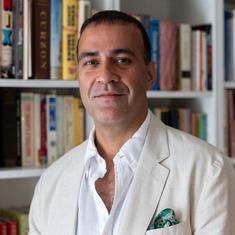Goa’s remarkable and unique colonial-era built heritage is comprehensively misunderstood and wilfully misrepresented. The most common error is to view the Latinate architecture of India’s smallest state via the prism of the rest of the subcontinent’s experience of British colonialism, where every aspect of planning and construction was dictated by the European overlords. But that was not the case in Goa, where the Portuguese ran out of money and energy by the cusp of the 18th century, and almost all the buildings that followed until decolonisation in 1961 were triggered, conceived and executed by ambitious natives.
In the new millennium, an overheated marketplace has developed for marvellous old Goan dwellings, which are bought and sold as “Portuguese houses”. About this lobotomised real estate shorthand, the Goan architect and Secretary of Goa Heritage Action Group Raya Shankhwalker writes:
“Ill-informed brokers have coined the term, which reflects a deeply ignorant conception of the complex, multi-layered evolution of architecture in Goa. It is wrong, even offensively wrong, and it is extremely irritating to see the term actually gain popularity instead of being discarded. The use of local materials, crafts and skills make the Western-influenced Goan house a unique architectural expression.”
![The renovated GMC building in Goa, India. Photo credit: Amey Hegde/Wikimedia Commons [Licensed under CC-BY-2.0]](https://sc0.blr1.digitaloceanspaces.com/inline/856585-GMC_building.jpg)
These nuances matter beyond mere semantics, because the many-layered syncretic Goan identity is being questioned anew in the current national political atmosphere charged with fanciful notions of purity, and a purportedly unpolluted past. Recently, Goa’s residents were shocked to read that the central government will soon establish a regional centre of the Indira Gandhi National Centre for the Arts “to promote local indigenous culture to counter Portuguese cultural influence” and “launch a massive hunt for folklore artistes which have nothing to do with Portuguese culture”.
Once again, the intricate cultural expressions of Goa that have arisen over millennia of contact with the outside world, most specifically from 450 years as the centrepiece of the Portuguese maritime empire, are treated as suspect, as though they do not qualify as Indian enough. The argument is quite like what continues to rage about the Taj Mahal, which the Bharatiya Janata Party’s Sangeet Som called “a blot on Indian culture…built by traitors”. His colleague GVL Narasimha Rao agreed, “It is a symbol of barbarism.” More worrisome still was Som’s boast, “What history are we talking about? The creator of Taj Mahal imprisoned his father. He wanted to wipe out Hindus. If these people are part of our history, then it is very sad and we will change this history.”
The threats sounded very much like warning shots in Goa, where many churches are undeniably built on sites previously occupied by Hindu temples (and most likely Buddhist, Jain and animist shrines before them) but are nonetheless cherished today by pilgrims and devotees of all religions. In this regard, it is exceedingly important to understand the many ways in which Goan experience of the Portuguese Estado da India is unique in the history of colonialism. In this riparian sliver of the Konkan coast, after an initial heyday that lasted for a couple of centuries, the Portuguese only managed to maintain control via painful negotiations with the local elites, who continually extracted considerable concessions to shift the balance of power in a way that was both alien and offensive to other European contemporaries.
Unique identity
Two additional potent factors exacerbated this singular situation. From the very beginning of colonial rule there was an official promotion of intermarriage with the locals. Later, the products of these alliances, along with all other Goans, were granted equal rights and freedoms with all other citizens of Portugal.
All this appalled the British no end. In his classic travel book, Goa and the Blue Mountains, the usually dauntless adventurer Richard Burton blanched when confronted by “black Portuguese” who enjoyed “perfect equality, political and social, between the two colours”. Fully conscious of the inherent irony, he voiced outrage that “the native members of a court-martial, if preponderating, would certainly find a European guilty, whether rightly or wrongly, n’importe.” It caused him considerable distress to witness Europeans subjected to parity with Indians.
![Fontainhas, Goa. Photo credit: Wikimedia Commons [Licensed under CC-BY-2.0]](https://sc0.blr1.digitaloceanspaces.com/inline/856585-Fontainhas_-_Blue_house_staircase.jpg)
Goa and the Blue Mountains was published in 1851, a full generation after secular, liberal republicanism was being practiced in Lisbon. By this time, a comprehensive internal rout was underway in Portuguese possessions around the Indian Ocean, as Goans seized both economic and political power in a wide arc from Mozambique to Macau (both of which served under Goan governors). At home, Panjim rose as Nova Goa, the three-dimensional expression of an assertive, self-confident native worldview. As the passionate city historian Vasco Pinho writes, here Panjimites “were assured of the rights to life, property and initiative. Grill-free houses, kept open even at night, spoke for the unsung freedom from fear the like of which has existed perhaps nowhere else”.
Citizens of the world
These well-travelled Goan citizens of the world, taking advantage of extraordinary liberties earned long before other Indians attained equality, generated distinctive cultural expressions. The emergent “cozinha de Goa” or cuisine of Goa amalgamated influences from Brazil, Africa, Europe and East Asia with ingredients and technique of the Konkan. Indo-Portuguese art turned secular, eventually seeding modern India with a series of masters like Antonio Trindade, Angelo da Fonseca and Francis Newton Souza. The late scholar Jose Pereira writes: “It was in Goa that Indian musicians first began to compose in western musical forms, incorporating into them motifs and nuances of their own immemorial tradition…Goans not only initiated the westernisation of Indian music, but also pioneered in Indian ethnomusicology.”
![Afonso Guest House, 173, Fontainhas - 19th-20th century. Photo credit: Urbz via Flickr [Licensed under CC BY 2.0]](https://sc0.blr1.digitaloceanspaces.com/inline/856585-kgrwoffvax-1510479172.jpg)
Pereira, a polyglot and a polymath, was a compulsive cataloguer. In a series of landmark books, capped by the tome Baroque India: The Neo-Roman Religious Architecture of South Asia, he made the pioneering effort to meticulously delineate just how different Goan churches are from any others in the world. In an article in a special issue of Marg magazine in 1980, titled Goa Dourada, he wrote, “The roots of the Baroque are partly Hebraic and West Asian, Christianity having arisen in the part of the world, but only in India was it able to establish contact with so many of its antecedents.”
In the heavily trafficked entrepot of Goa, Pereira writes:
“The Baroque did not come into an architectural void, but into areas which had long established modes of building. In the South were the temples of stately temples of venerable dynasties, the Pallavas, Cholas, Cheras and Chalukyas, and of the kings of Vijaynagar [and] Adil Shah II, the chief innovator of his dynasty at Bijapur where colossal mosques and tombs were soon to rise. Gujarat was graced by the elegant traceries and marble arabesques of its mosques and Jain temples. The Baroque…like the crystal of the Vedanta metaphor in contact with flowers of many colours – came to be tinged by the traits of these several traditions.”
Indigenous treasures
If Pereira’s scholarship provided the hardware for Goan architecture’s case for reckoning on its own terms as an Indian form with global significance, the killer software was provided in the 21st century by Paulo Varela Gomes, the passionate Indophile Portuguese architectural historian who passed away last year. Over two highly effective stints as the delegate to India of Lisbon-based Fundação Oriente, this relentlessly curious and open-minded professor of the University of Coimbra came to the conclusion that he was viewing “churches and houses that are unique in the world history of architecture” and decided to delve into the roots of how this stunning oeuvre came into existence.
In his superb study Whitewash, Red Stone (Yoda Press, 2011), Varela Gomes touches on the general scholarly consensus “that the houses built in Goa…in the 18th, 19th, and early 20th centuries constitute an extraordinarily coherent and distinct current in the panorama of housing around the world. These houses are now being named ‘Portuguese Houses’ perhaps because of the influence of tourism since ‘Portuguese’ is a more exotic denomination than Goan…There is no need to point out that houses such as those in Goa exist nowhere in any town or village in Portugal, Brazil, or Portuguese-influenced Africa. They are solely Goan.”
![Holy Spirit Church in Margao, Goa. Photo credit: Ramnath Bhat via Flickr [Licensed under CC BY 2.0]](https://sc0.blr1.digitaloceanspaces.com/inline/856585-wyafitiitq-1510479063.jpg)
But as important and perceptive as those comments are, the truly invaluable contributions of Varela Gomes come from his highly persuasive interpretative study of Goan church architecture, where he strikes bullseye unerringly:
“The reason for the hybrid character of Goan church architecture has often been explained as the result of the fact (more often than not undocumented by building documents) that they would probably have been ornamented by converted local craftsmen and artists, and also sometimes, by Hindu or Muslim painters, artisans and sculptors…To me, this explanation, as all others based on ‘influences’ and ‘contacts’ fails to account for the character and integrity of the churches of Goa.”
“One can see Portuguese vault composition, Flemish vaulting or ornament, Bijapuri tower design, Konkan stucco patterns and ornamental design,” wrote Varela Gomes. “But the churches as overall buildings did not result from the sum of their constitutive parts. Their builders and patrons knew how they wanted a Catholic church to look and how they wanted it to be experienced. Their understanding, I believe, was not Portuguese, Flemish or Indian, but Goan Catholic or Indo-Portuguese. To anyone with architectural or artistic sensitivity, these churches don’t seem to be the end-result of a compromise but the affirmative artistic statement of a cultural position.”
![St. Anne's Santana de Talaulim church, Goa. Photo credit: Naizal Dias/Wikimedia Commons [Licensed under CC-BY-SA-3.0]](https://sc0.blr1.digitaloceanspaces.com/inline/856585-lrmqmiqtrv-1510477937.jpg)
That cultural stance is simply native pride. Goans were the first Indians to seize the reins of their destiny, and they were not shy about expressing highly evolved aesthetic and cultural preferences. This is the crucial difference between the colonial structures in Goa and Mumbai or Kolkata. These “were not buildings imposed upon Goans, or buildings negotiated between Goans and foreign prelates or authorities…they were buildings by Goans, designed by Goan architects and masons, including Goan Catholic priests, and in many cases, commissioned by Goan landowners or Goan local communities”.
In other words, they are an indigenous treasure, treated exactly as such by the natives of Goa, who will happily pay their respects at churches and temples without discrimination. This universalist face of Goan Catholicism can be seen at the exquisite Baroque marvel that is Santana de Talaulim church on St. Anne’s “cucumber feast” day on July 26, where huge crowds flock to petition the deity for male offspring, but only a small minority are Catholics. Another example is the annual celebration of the “Apostle of the East”, St. Francis Xavier, at the world heritage precinct, including Se Cathedral (the largest church in Asia) and Bom Jesus Basilica, where tens of thousands of Hindus and Muslims arrive from all over the country to pay their respects.
![Basilica of Bom Jesus. Photo credit: Bikashrd/Wikimedia Commons [Licensed under CC-BY-SA-4.0]](https://sc0.blr1.digitaloceanspaces.com/inline/856585-qhehmdfnwe-1510478186.jpg)
Far from foreign, there could be nothing more beautifully Indian in every aspect of the practices involved. That acceptance is precisely what Mulk Raj Anand wanted for Goa’s churches. In his introduction to that seminal issue of Marg bristling with Jose Pereira’s contentions, he wrote:
“There has been so far, through the weight of the great religious archetypes of Hindu temples on our minds, a noticeable allergy to the dynamic churches and cathedrals of the Christians everywhere in India. Now, in the face of the polymorphic architecture of Goa, one hopes the revelations of the gigantic churches, with their richness of adumbration of forms, with the foliage of winged leaves, the mythic signs and pregnant symbols, the spiral-like arches, the dynamics of the mellifluous Christian art of Goa will become part of the cosmic labyrinths of holiness which are everywhere in our land.”










